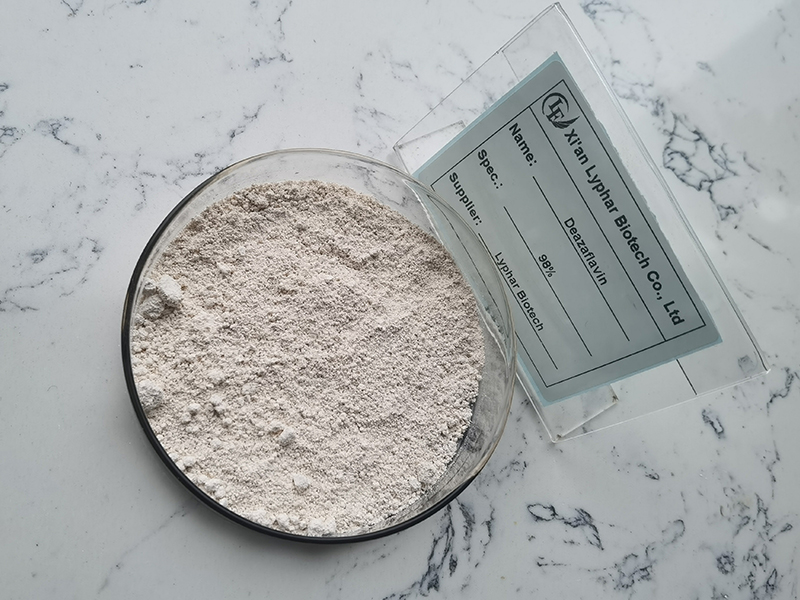5-Deazaflavin is a derivative of flavin, a class of molecules that are crucial for various biological processes, especially in electron transfer and redox reactions. It is a modified form of flavin where the nitrogen atom in the heterocyclic ring at position 5 (in a typical flavin structure) is replaced by a carbon atom. This modification affects the molecule’s electronic properties and can impact its biological and chemical activity.
Key Characteristics:
- Chemical Name: 5-Deazaflavin
- Chemical Formula: C9H7N3O2
- Molecular Weight: 189.17 g/mol
- Structure: 5-Deazaflavin has a structure similar to flavin, with a pyrimidine ring replacing the nitrogen atom in the flavin ring system.

Properties:
It is known for its role in various biochemical and bioinorganic applications, especially as a cofactor in biological systems.
It is structurally similar to flavin mononucleotide (FMN) and flavin adenine dinucleotide (FAD), which are involved in electron transfer processes in cellular respiration and photosynthesis.
Biological and Chemical Activity:
5-Deazaflavin is often used in biochemical studies as a tool for studying flavin-dependent enzymes. The altered nitrogen atom in the heterocycle can change how it interacts with enzymes that typically use flavins, which may provide insight into enzyme function and mechanism.
- Redox Properties: Like flavin, 5-Deazaflavin can participate in redox reactions, making it useful in electron transfer processes in certain biochemical settings.
- Enzyme Inhibition: It can be a potential inhibitor of flavin-dependent enzymes due to the structural similarity and competition for enzyme binding sites.

Applications:
- Enzyme Catalysis: 5-Deazaflavin can serve as an alternative cofactor in some enzymatic reactions where flavin cofactors would typically be used.
- Photochemical Studies: Due to its structural similarity to flavins, it has been studied in photochemistry and photobiology.
- Biological Research: It has been explored in studying redox reactions and electron transfer mechanisms in various biological processes.
Would you like to know more about its specific applications or any other details?
